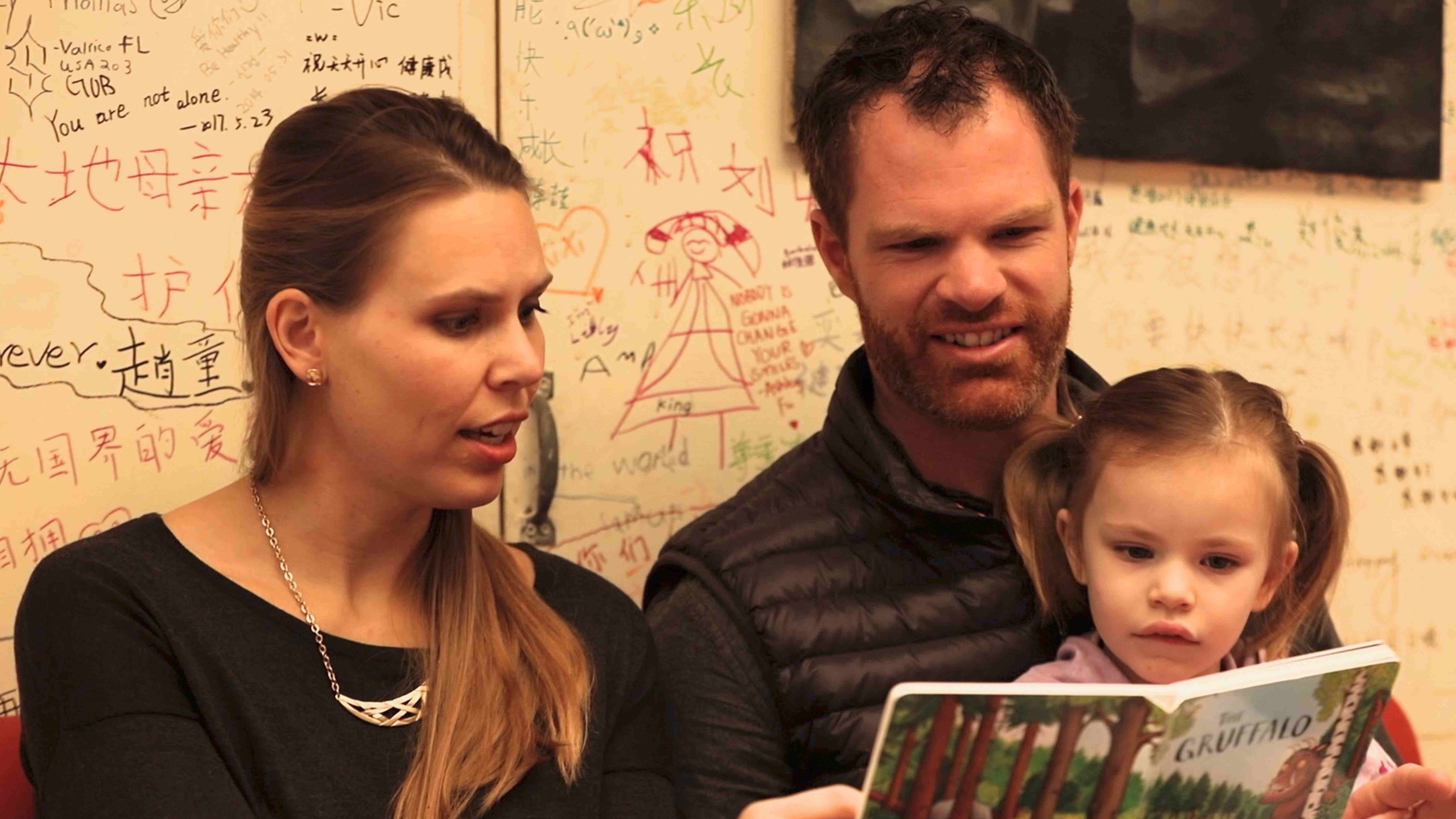
China
16:13, 25-Jan-2018
Finding a home: An international family’s journey to adopting in China
CGTN

By: Laura Schmitt and Zhou Xi
Tommy and Laura Thomson always knew they wanted to adopt a child; the question was, from where? The answer came during their first trip to China almost a decade ago.
As Tommy explains: “I think, before we came to China we would have considered other countries near the US, perhaps a Hispanic culture, myself having lived in Mexico and having always had a strong desire to go to South America, but instead we fell in love with China, and we decided if we want to adopt we would like to continue to have a relationship, therefore adopting a child from there.”
And so they started the adoption process. In order to immerse themselves in the home culture of their prospective child, the couple moved back to China with their young daughter, Ruby, in May 2016. They planned to spend the next 18 months helping out at a local NGO that takes in orphans with disabilities.
Once approved for adoption, they were matched up with a little girl originally from Fujian Province. But before they could proceed, they had to go through an emotionally-taxing period during which the authorities verified that her parents would not come forward to claim the girl.

Laura recounts the inner turmoil they faced during this time of uncertainty: “The original orphanage in which she was found have to advertise the child to the public of that area, so they can speak up and claim their child before they’re internationally adopted. And it actually is two or three months. Once that window is closed, doesn’t matter, nobody can speak up, they’re now available. So that was quite stressful. It was a really emotional time of ‘Well, if their family wants them, please take her… but we want her, too...’ But nobody stepped up to claim her, and so then she was available for international adoption. It was a while before she was given to us and matched with us, but at least she was available.”
China has long been a country of interest for US families eager to adopt, with almost half of all international adoptees in the US during 2016 having been born here. Following a steep fall in the number over the past decade, only around 5,300 Chinese children were adopted by Americans in 2016. This decline, to merely a quarter of the figure in 2004, is attributed to changes in the adoption laws, which have become increasingly stringent – notably in China. At the end of July 2017, the China Centre for Children’s Welfare and Adoption released an updated list of requirements for potential adoptive parents, which excluded people suffering from depression or epilepsy, and those with a Body Mass Index of over 40.

International adoptions are becoming more difficult in China./ CGTN Photo
International adoptions are becoming more difficult in China./ CGTN Photo
From the orphan’s side, there is a further threat to a successful adoption, in the form a ticking clock. According to Chinese adoption laws, on the children’s 14th birthday they are no longer eligible for adoption.
Speaking on behalf of her NGO, Laura says: “There is a rush for some of our older children because it does take a while to do an international adoption. You’re hitting 12; you’re hitting 13, we really need to get going on this. We’ve had children that have had a family matched but whatever the regulations, the family couldn’t get here in time and it fell through, and they were no longer adoptable.”
In Laura and Tommy’s case, the process took almost two years, but they finally got their happy ending. They have packed their suitcases and returned to the US with their daughter, but with a resolve to keep the connection with her country of birth, alive. So, this is a “See you soon” rather than a final goodbye.
Rediscovering China is a 30-minute features program offering in-depth reports on the major issues facing China today. It airs Sunday at 10.30 a.m. BJT (0230GMT), with a rebroadcast at 11.30 p.m. (1530GMT), as well as Monday 8.30 a.m. (0030GMT) and Friday 1.30 p.m. (0530GMT).

SITEMAP
Copyright © 2018 CGTN. Beijing ICP prepared NO.16065310-3
Copyright © 2018 CGTN. Beijing ICP prepared NO.16065310-3